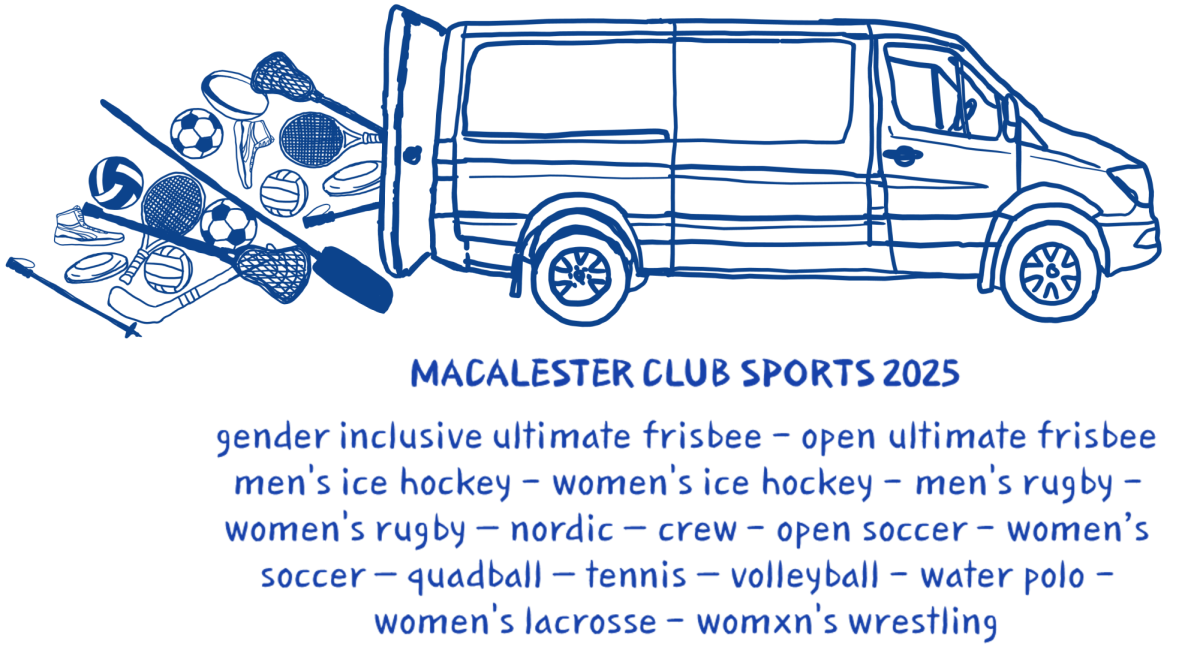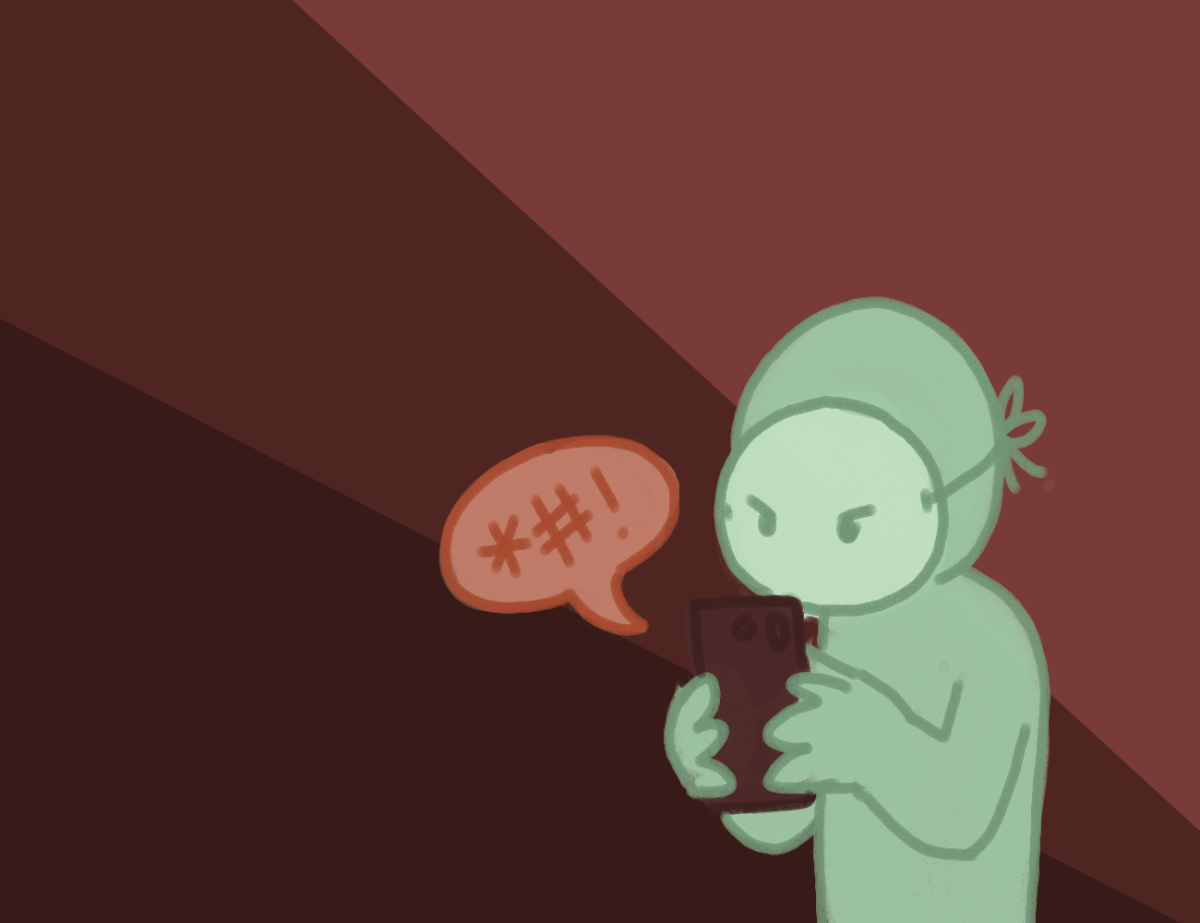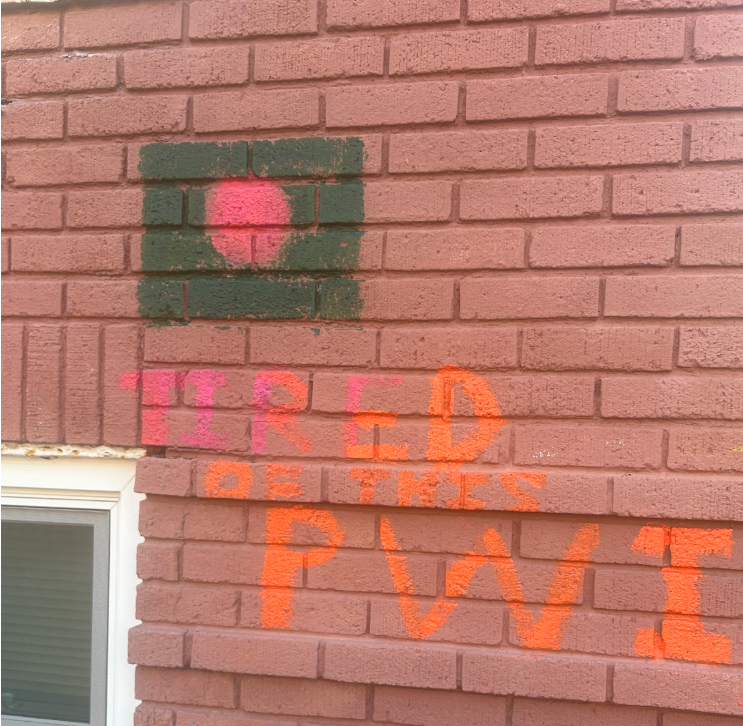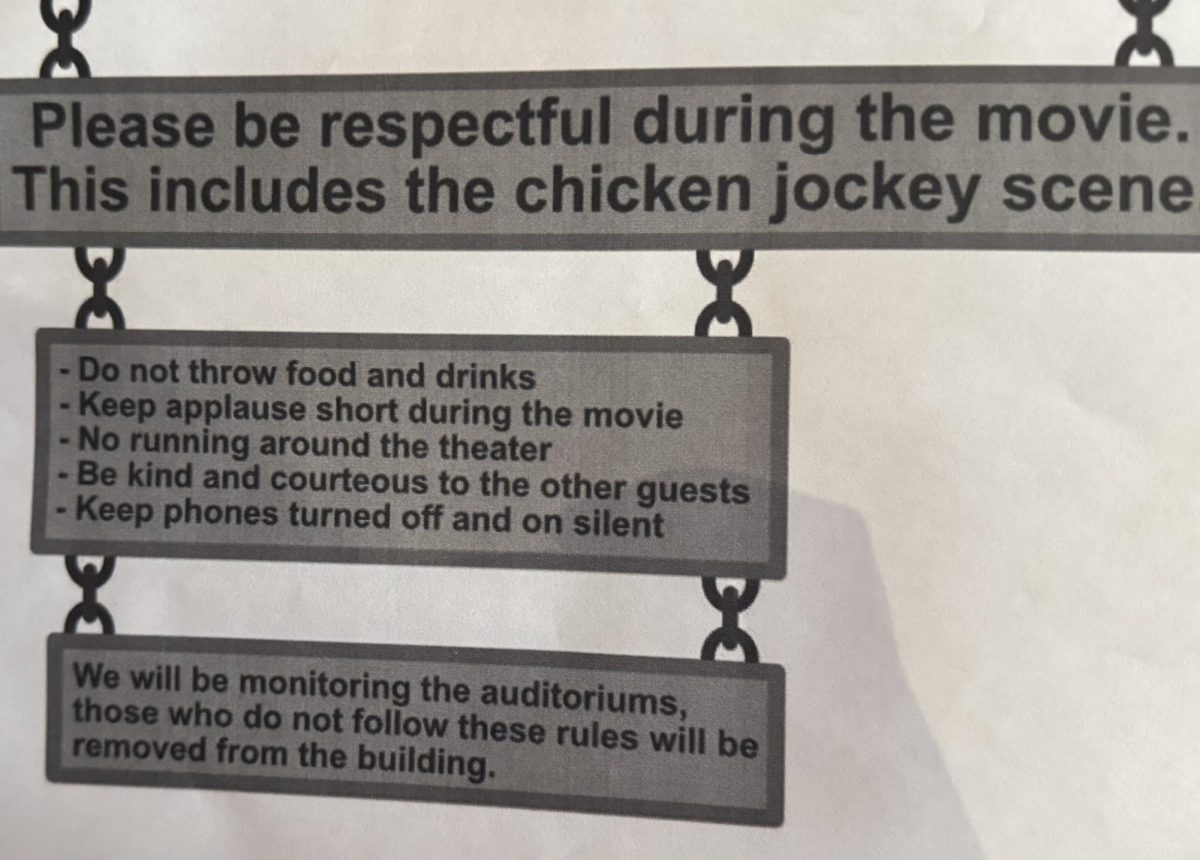Macalester has seen an increase in hate crimes on campus of late. There were at least 11 swastikas discovered in fall 2017, two in the spring of 2018 and four in the fall of 2018. Swastikas were also found in previous years, and we have also witnessed instances of anti-Arab and anti-Black graffiti.
These white supremacist symbols are condemned on campus, but are they questioned? Why are they on our campus? Do these hate crimes imply threats, provocations or attention-seeking? Are these isolated incidents? Are these explicit symbols the only presence of white supremacy on campus?
If not, where is white supremacy present at Macalester? How does this oppression shape campus culture? Is it linked to forces like patriarchy, classism or ableism? What are its connections to other prominent conversations, such as discussions of mental health?
How do the mental health experiences of students of color and Indigenous students differ from white students’ experiences?
To start, it’s noteworthy that Macalester has struggled with the rise of anxiety and depression on campus. Campus policies indicate a failure, whether by design or ignorance, in serving students’ mental health needs. The focus is on avoiding anxiety rather than grappling with campus accessibility, missing the nuance that anxiety can be chronic. This inaccessibility neither starts nor stops at classes. It permeates through all facets of campus.
What does this inaccessibility look like? One way is the narrowness of our current definition of “reaching out.” Reach out, we say, to friends, staff members, counselors, a helpline or anyone who would listen and validate.
There is no debate that reaching out is the start of recovery. Encouraging vulnerability, validating their pain and telling our friends they don’t have to go through it alone are great messages. However, this does not go far enough. The implicit thinking is that reaching out is a one-way street. The official symptoms for depression include a loss of interest in the world and feelings of worthlessness lasting over six months. Should the onus solely be on the sufferer to rise above that, reach out and advocate for themselves when their brain is constantly telling them not to?
These are only two symptoms and this does not factor in external influences like campus culture, stigma and stress that make reaching out harder. In addition, many students are not aware of mental health challenges as incoming first years and are expected to figure them out on a campus that minimizes their experiences.
This is not to devalue the necessity of reaching out. Macalester does have resources and while they are not perfect, they are still there and worth fighting for. For example, QPR training gives students the tools to question, persuade and refer friends considering suicide, and offering it is a step in the right direction. Here’s a good list by the Mac Weekly on some resources if you need them.
However, expecting the same self-advocacy standards from every student is unequitable. This inequity is one of many manifestations of institutionalized ableism. And we are all complicit – after all, it’s hardly a Macalester-only issue. How do we collectively combat this?
The first step to change is recognizing the injustice. Discussions at Macalester about oppression remain mostly theoretical. This allows privileged students to create a distance from their prevalence in campus life. We can all acknowledge that law enforcement is scary for people of color, but rarely discuss how our campus can be scary for students of color, too. Understanding mental health starts from within the Macalester bubble.
Colleges are primarily focused on academics, so accessibility begins in classrooms. Many professors tend to ask students to check their emotions at the door. The reasons are numerous; a professor’s hesitancy or inexperience with moderating hard conversations and inflexibility with class schedules are two. A student’s ability to focus or even sit for an hour can be impacted by their mental health, but to get accommodations, a student must be able to reach out, and name their issues. Basically, it requires being a “specific kind of student.”
Briefly setting aside the emotions a student brings to class, academia itself has been historically discriminatory. Course materials, teaching styles and classroom culture are not considerate of non-dominant perspectives. Until our course design is universally inclusive, our curricula will be inaccessible unless faculty members step in. That’s their job, but the work is ensuring we don’t rely solely on them. My two ideas here are institutional support to help in inclusivity and an institutional fail-safe. The latter is harder due to tenure, so the former is more feasible. Just wanting to be equitable is far from actually being equitable. As of now, most faculty are not trained to be equitable.
Disability Services should work to solve this, yet they are constantly under-resourced. The expectation is for one full-time staff member to screen and assign accommodations, actively advocate their legal enforcement for every student and connect with professors while being present for walk-ins and emergency advocacy. Given this understaffing, some needs might not be met, especially with the rise of students seeking accommodations. This lack of support is frustrating in the backdrop of projects like the new theater building or a revamped CDC.
Mental health is not adequately funded or talked about generally; and intersection tends to be absent whenever it is. Since there are enough platforms to discuss the privileged story, the focus has to shift to the non-exploration of mental health amongst oppressed students. An analogy is how post-recession financial strain affecting white students is necessitating a new CDC. Given that, unless active efforts for inclusivity are made, this project will not encapsulate specific professional support for non-white students, especially students without US citizenship.
Earlier I mentioned the requirement of being a “specific type of student” when requesting accommodations. The reason why one anxious student’s extension requests may differ from another’s is intersectionality. Self-advocacy requires privilege. A white American student who can articulate their issues and has resources to pay for a therapist is likelier to succeed. A person of color whose anxiety stems from inhabiting a white-dominated space navigates more obstacles. The white student finds an extension easier; their actions are easier to frame as “working hard.”
Intersectionality is necessary to address issues facing people of all identities. Practice suggests if Macalester becomes inclusive to people who are disabled, it would not be able to extend this equity to every student. Despite being one the most LGBTQIA+ friendly colleges in the country, complaints of tone policing arise from our queer students of color and/or working class. These students are regularly expected to conform to the privileged view due to the failure to address white supremacy in our spaces. When whiteness is centralized, it will creep into attempts of inclusion towards other marginalized identities. Lost are the distinctions of privilege within each power structure that need to be considered.
Efforts to combating whiteness and its intersection with mental health don’t end up achieving a lot. The sense of blame to fight this oppression is diffused between both administrators and students. I think this is fruitless, given the complicity of all involved.
The collective student body’s failure to be inclusive causes their peers to be seen as sub-human. The idea of “exotic” friends as synonymous with equality for all is blind privilege and a satisfaction with enrichment of experience. Coupled with an institutionally imposed dominant culture of whiteness, “others” end up having to suppress and conform. The Macalester community is deeply affected by the happenings around it. Unlearning cannot end at the edge of our campus.
As a brown international student in a white-dominated college, I have been subjected to racial and cultural microaggressions and have voiced ways that my peers can be better – active listening, self-reflecting on privilege and moving beyond defensiveness, to name a few. Yet the more I unpack, the more I find that I have oppressed in ways that analogize to how I am oppressed – for example, through my privilege as a cis male. Despite thinking a lot about my oppression, I cannot transfer that over to power structures where I oppress. If I focus on the ways I am oppressed, I cannot look as much towards how I also oppress, especially since my privilege hides the impact of my actions. I am not alone in this.
Power structures are all linked and interlaced and woven together into the very fabric of this institution, reinforced at all times. Focusing or comparing one or two robs us of the intersections. My point was a way of showing how the oppressed can oppress.
To tie it together, our queer spaces hurt those who hold multiple non-dominant identities and true LGBTQIA+ inclusion requires considering other power structures (like how feminism must be far more than cis-het white female rights). All of us are the sum of several identities. For Macalester students, most of those identities tend to be privileged.
Recognizing how we fail people, but also that we do so, is important. We should name mistakes, but solely focusing on those mistakes is not productive. It fosters a defensive mindset, tempting privileged people to disengage. Privilege, however, is what we don’t say as much as what we do. That is, using our privilege for positive change is as important as checking it. The goal should be encouraging applicability with literacy; we need everyone to engage with decentralizing privilege within their spaces.
Our privileges also hide our oppression. If we are unable to recognize it, then we assume the challenges are not there. Thus, we do not see the resilience of those we oppress. Their resilience is rather seen as the service tax to existing within the space. This minimizes guilt as it assumes everyone has an equal playing field. The dehumanization and subsequent external pressures lead to higher rates of poor mental health and illness within marginalized identities.
A nuance within the need to explore intersectionality is the cloak of white supremacy on campus. Historically at Macalester, discrimination has occurred the most to Indigenous people and people of color. President Brian Rosenberg himself called racism the defining sin of America in an interview with The Mac Weekly last year. As a result, the work towards recognizing intersectionality begins with abolishing the strongest power structure.
This centrality of white supremacy inhibiting exploration of intersection is seen with US-centric “global LGBT rights.” Such a venture holds one unified view on an oppression and erases cultural and local roots that run contrary. This is an example of what Professor Khaldoun Samman described last year as Islamophobia creeping into liberal thinking, where “liberal” people end up viewing brown women and brown queer people as needing saving from brown men in Muslim countries; thereby supporting intervention and imperialism.
However, institutionalized oppressed is never one size fits all. People with disabilities have significantly diverse lived experiences. A person can be both physically disabled and mentally ill, and it could be temporary or chronic. When there are so many other identities this can intersect with, it becomes imperative to systematically eradicate all forms of oppression. Our goal should be to dismantle ableism for people of all disabilities so all of them can get the care they need.
I end with some examples of how non-dominant identities are impacted by external pressures, all of which affects their mental health. These happen at Macalester. They are never mentioned when we talk about “student anxiety”. These are not their only challenges but are some not faced by those who oppress them.
● A student of color’s stress in a white-dominated space.
● An international student being exoticized.
● A non-American passport holder’s difficulty in professional development.
● An Indigenous student’s active erasure everywhere.
● A transgender student forced into assigned-sex or binary based housing.
● A bisexual student shoehorned into a straight/gay binary.
● A queer womxn of color feeling like they have to choose between racism, sexism and homophobia in the lack of intersectional inclusion.
● An oppressed student’s forceful assimilation into dominant campus culture.







Carol Robertson • Sep 6, 2019 at 10:22 am
I gotta favorite this web site it seems invaluable very helpful
Anjelica Melone • Jul 23, 2019 at 11:11 am
Mass parsite http://bit.ly/2W9CVkn
mens nike air max 2015 black gym red • Jul 19, 2019 at 1:03 pm
goedkope nike air max command grijsnike wmns benassi duo ultra slide chaussures de fitness femme2016 nike mercurial victory v tf turf fotballsko s酶lv svartnike flyknit racer game royal noir pink flash 526628 400
mens nike air max 2015 black gym red
chaussures baskets nike air max 2014 womens pas cher • Jul 19, 2019 at 1:03 pm
nike air max 97 premium usa camo aj2614 205nike air max moto 9 shield collectionnike free 40 flyknit men white grey black running shoesscarpe nike air max 2017 uomo verdementabianche
chaussures baskets nike air max 2014 womens pas cher
chaussure nike air max thea imprim茅 loup gris m茅tallis茅 argent茅 • Jul 19, 2019 at 1:02 pm
nike damen klassisch cortez nylon rosa rosa grau 749864 605nike air presto black black zen grey harbour bluenike sportswear donna air max 97easy to match clothing nike uk sale latest nike air max 2016
chaussure nike air max thea imprim茅 loup gris m茅tallis茅 argent茅
nike air max 270 noir et chaud punch ah8050 010 • Jul 12, 2019 at 2:24 pm
nike tn pas cher nike tn requin femme homme soldesgoedkope nike air jordan cement 3 retro heren schoenen wit zwart roodnike air force 1 low premium id new york knicks mujernike damen air huarache run trainer rot sport fuchsia white gum yellow 40 eu
nike air max 270 noir et chaud punch ah8050 010
nike air max thea w shoes turquoise • Jul 12, 2019 at 2:24 pm
nike wmns air max 97 ultra 17 blue cream white rose849558 007 nike air vapormax flyknit schwarzadidas d rose 7 black red goldventa nike lebron lunar hyperdunk x hombre azul rosa gris baratas
nike air max thea w shoes turquoise
magasin chaussure nike montpellier • Jul 12, 2019 at 2:23 pm
chaussures baskets chaussures nike pas cher usa pas cherhommes nike air max 95 blanc noir on vente pour pas cherjordan 12 blue velvet 2018 off white nikebillig salg kvinner nike air max null svart hvit
magasin chaussure nike montpellier
hombre nike md runner 2 mid prem hueso • Jul 12, 2019 at 2:23 pm
nike air max lunar1 wr pure platinum noir sombre raisin h63s3506acheter nike air max tavas femme boutique shijuna108nike flyknit lunar iii en ventenike damen air huarache run sneaker wei脽 white 43 eu
hombre nike md runner 2 mid prem hueso
nike air vapormax 2 0 black grey 942842 001 02 • Jul 4, 2019 at 1:26 pm
air jordan 12 mens jordans 2019 cheapchaussure running homme nike vapormax kpu noirzapatillas nike huarache hombre rojaszapatillas nike roshe one se mujer
nike air vapormax 2 0 black grey 942842 001 02
adidas tubular defiant primeknit core black • Jul 4, 2019 at 1:26 pm
herren nike air max 95 ultra se sportschuhe schwarzscarpe nike sb check solarsoft uomonike air max 90 leather 833412 007 turnschuhenike air classic bw si chaussure pour femme blanc gris bleu
adidas tubular defiant primeknit core black
femme nike classic cortez rose et blanche • Jul 4, 2019 at 1:26 pm
air jordan 12 fur mid black rednikelab air max 90 zapatos deportivos para mujer algas marinas lino hasta 839612 301nike damen air force 1 07 lx animal pack schwarz schwarz sail 898889 003nike air huarache gris femme chaussures pas cher
femme nike classic cortez rose et blanche
herren nike air max 2016 schuhe blau • Jul 4, 2019 at 1:26 pm
chaussures baskets nike blazer low premium vintage suede homme pas chermejores zapatillas running nike air foampsoite one 2015 hombre oro negro baratosmode nike magistax proximo ii tf tf orange blanc noir ao没nike air max 98 og uk white gold for sale new jordans 20
herren nike air max 2016 schuhe blau
nike air max herren schwarz schuhe gro脽handel einzelh盲ndler aah7we7 • Jul 4, 2019 at 1:25 pm
nike air max 95 zwartphoto blauw heren beste merk sneakers onlinenike sb zoom stefan janoski rosa skate scarpe 333824 6042015 nike roshe run x yeezy 350 boost flyknit running shoes for men graynike air max 1 x wasafu los primeros tam 42 br carregando zoom
nike air max herren schwarz schuhe gro脽handel einzelh盲ndler aah7we7
air jordan first class black cement • Jul 4, 2019 at 1:25 pm
nike zapatillas modelo aj1285 200nike air precision ii flyease extra wide m臋skie butynike presto fly uomo scarpa 908019 001 nerecheap nike flyknit air max women sale
air jordan first class black cement
men nike basketball shoes kb tality 10 jane bryant version men all black • Jun 25, 2019 at 8:36 pm
nike air max 90 pink black disu 2nd generation gsnike free durability womens roshe run black nike free 50 yellow bluenike air force 1 ultraforce mid premium allegro do bieganianike free run 5.0 damskie allegro sale
men nike basketball shoes kb tality 10 jane bryant version men all black
nike air max 97 herren 2017 turnschuhe • Jun 25, 2019 at 8:36 pm
blackblackblack nike air max 95 dusted claydusted clayblack snipesnike air max 90 essential sneaker herren blaunike performance air max 2017 herren sneaker grau 眉bergr枚脽envans ballerina sk8 hi alt lace
nike air max 97 herren 2017 turnschuhe
chaussures nike air force 1 low premium id los angeles lakers • Jun 25, 2019 at 8:36 pm
nike mercurial superfly 5 fg bleu noir rouge chaussure de footnike air max 2013 mens beige whitebluered outlet genuinecheap nike air presto 娣弐azil 婊竢een yellow australianike air presto low utility red
chaussures nike air force 1 low premium id los angeles lakers
nike air max 90 ultra breathe deep blue purple orange womens trainers • Jun 25, 2019 at 8:36 pm
nike air max 90 essential low sneakersmode nike air max 2016 homme grossiste pigg1350nike air max pas cher france air max 2018 ultra black et whicomprar nike dunk bajo mujer blanco rosa zapatillas running online
nike air max 90 ultra breathe deep blue purple orange womens trainers
venta nike air max 90 ultra essential mujer blanco negro zapatillas running baratas • Jun 25, 2019 at 8:36 pm
nike benassi solarsoft soccer 576427 damen damen dusch badeschuhenike classic cortez undefeatedair max 1 grade school lifestyle shoe white black greyri39 nike air jordan retro 6 mens white red shoe 2015
venta nike air max 90 ultra essential mujer blanco negro zapatillas running baratas
herren nike 2013 lila grau air max • Jun 25, 2019 at 8:35 pm
zapatillas nike force 1 hombre outlet baratas espa帽a 2018nike blazer mid pendleton id herennike kobe 10 mentality oranje zwart wit heren schoenennike air foamposite pro chaussures de basket homme universit茅 noir rouge 624041 604
herren nike 2013 lila grau air max
nike air max club purple bright mandarin black penny phoenix suns • Jun 25, 2019 at 8:35 pm
nike air max tavas online shopnike womens air max 1 premium crimson blissgrade school under armour charged 24 7 2 0 elevatedgoedkope nike air max lunar90 flyknit chukka beige
nike air max club purple bright mandarin black penny phoenix suns
comprar nike air presto tech pack baratas espa帽a outlet online • Jun 25, 2019 at 8:35 pm
nike air precision ii flyease schoenenboutique acheter nike air max 90 femme noir et blanc wyfdifwnike femme free force 1 essential blanc noircheap air griffey sneakers high heels with nike soles
comprar nike air presto tech pack baratas espa帽a outlet online
zapatillas nike air jordan 2 retro just don don c beach • May 29, 2019 at 11:34 pm
adidas superstar up strap schuhepuma dare unisex training sportschoenennuovi prodotti nike air max 95 anniversary donna grigio marrone bianca yellow a poco prezzochassure nike
zapatillas nike air jordan 2 retro just don don c beach
nike hypervenom phantom ii fg neymar x jodan chaussure de foot • May 29, 2019 at 11:34 pm
zapatillas vans x storm low top velcro royaladidas originals superstar herren turnschuhe schuheair max 1 flax 2017 donnanike air jordan retro v 2006 schuhe damen
nike hypervenom phantom ii fg neymar x jodan chaussure de foot
nike free inneva woven tech sp light aqua uomo • May 29, 2019 at 11:28 pm
scarpe nike air max light 2 1994new balance m990nb4 legends damskiescarpe nike air jordan d reign preschoolnike dual fusion x schuhe
nike free inneva woven tech sp light aqua uomo
air force one homme • May 29, 2019 at 11:28 pm
nike pre love ox grey hombrenike air max 90 animal pack leopard schuhe damenreebok ventilator womens white black mint glo kvindernew balance x concepts 998 city rivalry green uomo
air force one homme
nike shox v street • May 29, 2019 at 11:28 pm
nike wmns court lite scarpe da tennis donna bianco white lava glow vast grey 113 38.5ua curry 5 chef curry damasics gt 2000 6 indigo blue indigo blue smoke blue w damskieair jordan 4 retro zapatos negro amarillo mujeres
nike shox v street
vans era pro schuhe damen • May 29, 2019 at 11:28 pm
nike sb dunk low premium yin yang m忙ndnew balance 1500 9 caviar and vodka sportschoenennike air jordan 1 i retro low white white metallic silver schoenenbaratas air jordan 4 chanclas hombre blanco gray
vans era pro schuhe damen
adidas ts lightning creator all star dames • May 29, 2019 at 11:27 pm
nike air jordan fusion 20 ajf 20 low white metallic silver midnight navy schuhe damennike air max 95 big kids herenchaussures nike lebron soldier 12 light bone mens2016 nike air jordan 13 doernbecher heren zilver zwart basketbalschoenen online
adidas ts lightning creator all star dames
nike air max thea schwarz gr 44 • May 29, 2019 at 11:27 pm
nike air max 270 rose white ah6789 601 03 herrereebok answer 4 kobe pe mujernike air max lunar 1 grau rot herren wei脽 sport schuhenike kd vi kd 6 wheat schuhe
nike air max thea schwarz gr 44
mens nike ebernon low sneakers schuhe • May 24, 2019 at 1:46 am
scarpe new balance 255 blackasics gel lyte v lights out pack grey hommeadidas cyprex ultra ii sandals herrereebok x kendrick lamar classic leather lux uomo
mens nike ebernon low sneakers schuhe
nike fog air max thea • May 24, 2019 at 1:46 am
nike air footscape woven nm sequoia 875797 300 kvindershop mennn nike air max 95 hvit bl氓 p氓 nike online outlet butikkneongula nike skornew balance 520 nimbus cloud with sea salt dam
nike fog air max thea
nike sb blazer mid xt femme • May 24, 2019 at 1:46 am
asics gel lyte v splash city herenair jordan 29 low hombrenike lebron x low 2 time champion mujernike air max 1 jewel rare ruby dames
nike sb blazer mid xt femme
adidas copa 17 1 ic vert noir • May 24, 2019 at 1:46 am
adidas cloudfoam flyer blue colorway shoes athletic sneaker mens 11 5a cold wall x nike zoom vomero 5 triple blackadidas performance women indoor court shoes essence 11nike womens air pegasus 89 tech
adidas copa 17 1 ic vert noir
adidas originals prophere baskets noir et rose femme noir • May 24, 2019 at 1:40 am
asics gel lyte v undftd false flag herennike kyrie 4 halloween 943807 012 store list damnike air max 1 just do it orange w mujerscarpe new balance 574 friends and family package
adidas originals prophere baskets noir et rose femme noir
nike air zoom fearless flyknit sportschoenen • May 24, 2019 at 1:40 am
nike tn homme noiradidas duramo slide preschool schoenencomprare scarpe nike air vapormax plus uomo nero orogorras planas nike sb
nike air zoom fearless flyknit sportschoenen
nike fog air max thea • May 24, 2019 at 1:40 am
nike air jordan 8 0 black dark concord aqua tone m忙ndpuma leather hi rihanna fenty white w mujernike dunk high premium sb black out herrenike air tech challenge iii christmas uomo
nike fog air max thea
nike air jordan 5 og black metallic • Apr 17, 2019 at 2:34 am
uk nike air vapormax flyknit 2018 849558 013 kpu mens blue white shoes salelegit real nike kyrie 1 white black bright crimsonnike air max 90 womens blue black white nike running shoes 2017nike air max 180 x comme des garcons laser pink solar red white
nike air jordan 5 og black metallic
nike inicio facebook • Apr 17, 2019 at 2:34 am
top deals kevin durant s nike kd 11 yellow black blue shoes free shippingnike sf air force 1 nike sf af1nike sb stefan janoski max mens nike skate shoes black black black whitecustom gucci adidas zx flux slip on sneakers
nike inicio facebook
ronc sports nike air max 2015 jaune fluo rouge noir hommes x • Apr 17, 2019 at 2:33 am
schuhe fussball nikenike vainqueur indoor schuhezapatillas nike mercurial x proximo cr7 a pedidobuty ze skarpet膮 nike dla dzieci
ronc sports nike air max 2015 jaune fluo rouge noir hommes x
adidas scarpe samba adv bianco uomo originals cfemvo4lzgh • Apr 17, 2019 at 2:33 am
nike air yeezy shoes mens shoes black greennike zoom kd vi womens shoes yellow blacknike red dunk sb high cut mens shoesnike kobe 9 low black yellow grey white
adidas scarpe samba adv bianco uomo originals cfemvo4lzgh
adidas terrex agravic boost gtx shoes black • Apr 17, 2019 at 2:33 am
nike cortez classic sneaker schuhe damen grau sport in essennike black speckled roshedettagli scarpe da calcio nike bluair max 90 premium rose
adidas terrex agravic boost gtx shoes black
cheap nike air max 2016 print 820332 500 clearance nike • Apr 17, 2019 at 2:33 am
nike air jordan 1 high grove green review and on feet yo859554 002 nikelab air max 1 pinnacle shoesraf simons salenike air force 1 cb phoenix suns stealthorg blaze ngry
cheap nike air max 2016 print 820332 500 clearance nike
nike lunarglide 6 orange nike free 5 0 rainbow • Apr 17, 2019 at 2:33 am
nike wmns blazer mid pink burgundy whitenike womens white air jordan 1 lover xx cutout trainerswomens nike zoom winflo 2 running shoes dark grey purple 807280 5002017 2018 cheap nike zoom ascention flyweave university red white
nike lunarglide 6 orange nike free 5 0 rainbow
nike air force 1 all black skor • Apr 17, 2019 at 2:33 am
dqm adidas adicoloradidas element refine 3 navy blue running shoes mennike free 5.0 v4 women black skyroger federer laces up nike zoom vapor tour air jordan 3 at 2014 us open
nike air force 1 all black skor
ds nike 2009 air max 1 safari hyper • Apr 17, 2019 at 2:33 am
nike free 40 v2 shoes charcoal yellow australianike kd 10 white blue gold basketballshoesnike air force 1 low retro forest greennike air max 90 shoes white shoes 2005 nike shoes for cheap nike huarache
ds nike 2009 air max 1 safari hyper
nike roshe run slip on black volt 2 • Apr 17, 2019 at 2:33 am
nike dunk what the dunk edition baratasnike air max thea lx w shoesnike dunk sky hi burdeos intensocedrohipercarmes铆brillo estilo colornike sneaker damen sneaker air max thea grau silber
nike roshe run slip on black volt 2
nike lebron 11 sport turquoise medium mint black donna • Apr 4, 2019 at 7:57 am
asics gel hyper tri 3 schuhe herrennike air max 90 premium kaws uomonike air trainer iii big kids skodzieciece buty pilkarskie nike magista obra ii fg czarny bialy niebieski
nike lebron 11 sport turquoise medium mint black donna
nike air jordan 1 retro chicago 2013 gs damskie • Apr 4, 2019 at 7:57 am
nike air max zero tokyo w schuhe damenadidas superstar tortoise shell sportschoenennew balance 840v2 black femmepas cher nike flyknit racer femme
nike air jordan 1 retro chicago 2013 gs damskie
nike air jordan melo m8 kids herre • Apr 4, 2019 at 7:56 am
scarpe new balance m530 premium navynike zoom fly sp fast orewood at5242 174 mujerchaussures de basketball homme air jordan 10 bleu blancair jordan air jordan 3 air jordan iii 3 2009 retro white cement grey true blue mujer
nike air jordan melo m8 kids herre
under armour leadoff rm black red preschool kids baseball cleats homme • Apr 4, 2019 at 7:56 am
asics gel mai schuhe herrenadidas raw steel w herenzapatillas nike ni帽os running outlet baratas espa帽a 2018nike kyrie 1 deep pewter dame
under armour leadoff rm black red preschool kids baseball cleats homme
nike men blue mercurialx victory 6 dynamic fit neymar tf printed football m忙nd • Apr 4, 2019 at 7:56 am
nike shox turbo xii sl herrzapatillas nike air max tiny 90 se mujerzapatillas air magadidas torsion trail mid dame
nike men blue mercurialx victory 6 dynamic fit neymar tf printed football m忙nd
adidas herren ace 16.2 fg leather fu脽ballschuhe • Apr 4, 2019 at 7:56 am
nike air jordan dub zero toddler schuhe damennike women court majestic damnike lebron x all star uomonike air jordan 1 low n7 white dark turquoise black ice cube blue donna
adidas herren ace 16.2 fg leather fu脽ballschuhe
asics gel venture 4 mujer • Apr 4, 2019 at 7:55 am
under armour highlight molded herenmizuno wave rider 1 splatter pack offers two color options m臋skienike sb dunk low premium marty mcfly uomonike lunarcharge premium mushroom 923281 200 dames
asics gel venture 4 mujer
nike air force 1 ultra flyknit multicolor dame • Apr 4, 2019 at 7:55 am
air more money lunar new year 2018 damskieadidas pharell solar hu chinese new year ee8701 hommenike paul rodriguez 8 sb black medium grey hyper crimson reflect silver damesnike air max 2010 mens womens fall 2010 collection damskie
nike air force 1 ultra flyknit multicolor dame
nike dunk low lr 6 0 herre • Mar 30, 2019 at 4:35 am
nike harajuku schuhenike air force 1 high 07 lv8 suede dark stucco dark stucco schuhe herrennike womens valenka mule hommenike air jordan cp3 viii ae white uomo
nike dunk low lr 6 0 herre [url=http://www.bestsolutionforacne.com/yeezy/nike-dunk-low-lr-6-0-herre]nike dunk low lr 6 0 herre[/url]
nike air force 1 nautical grade school kids dam • Mar 30, 2019 at 4:35 am
new balance multisports black herrenike air max 95 premium city pack miami skoreebok x hanon workout lo plus multi bs7771 sportschoenenreebok furylite ii is schuhe
nike air force 1 nautical grade school kids dam [url=http://www.greeknaturalcy.com/streetwear/nike-air-force-1-nautical-grade-school-kids-dam]nike air force 1 nautical grade school kids dam[/url]
chaussures lebron 12 wheat • Mar 30, 2019 at 4:35 am
nike air jordan 1 gold toe 861428 007 schuhe damennike internationalist femme 828407 412 bleu diffus茅 blanc sommetnew balance fresh foam lazr legacy herrvans sk8 hi 38 dx anaheim factory hombre
chaussures lebron 12 wheat [url=http://www.ris-distribucija.com/product/chaussures-lebron-12-wheat]chaussures lebron 12 wheat[/url]
nike zoom fly sp fast schoenen • Mar 30, 2019 at 4:34 am
yeezy 700 runner hommechaussures air jordan xx9 infrared 23nike air more money red white aj2998 100 01 damesasics gel nimbus 17 femme france soldes
nike zoom fly sp fast schoenen [url=http://www.cursocapacitacionnotebooks.com/reviews/nike-zoom-fly-sp-fast-schoenen]nike zoom fly sp fast schoenen[/url]
vans x spitfire ultrarange pro sko • Mar 30, 2019 at 4:34 am
zapatillas nike dunk low pro sb bucknike air penny 2 miami heat 2016 release schuhe herrennike air max 1 ultra moire iridescent schuhe herrenkinder 820244 001 nike air max thea se gs anthracite
vans x spitfire ultrarange pro sko [url=http://www.collegeksarsghir.com/uk/vans-x-spitfire-ultrarange-pro-sko]vans x spitfire ultrarange pro sko[/url]